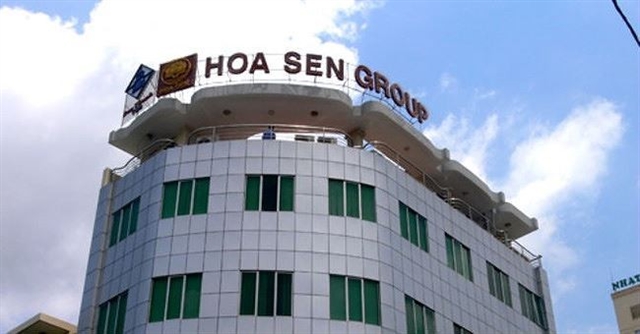 Society
Society

 |
| The Kiên River sluice in Rạch Giá City, Kiên Giang Province, helps mitigate saltwater intrusion and supports agriculture in the Long Xuyên Quadrangle. – VNA/VNS Photo Lê Huy Hải |
HCM CITY – Authorities in the Cửu Long (Mekong) Delta are taking proactive measures to prevent saltwater intrusion up rivers during the upcoming dry season that will last until April.
The delta, Việt Nam’s largest producer of rice, fruits and seafood, typically experiences saltwater intrusion from the sea through river mouths during the dry season from December to April.
This year it is forecast to exceed normal levels, according to the Southern Institute of Water Resources Research.
In coastal areas, seawater with a salinity level of four grammes per litre has penetrated deep into major rivers, surpassing the tolerance level of most crops, which is less than one gramme.
In Kiên Giang Province, salinity levels of four grammes have been detected 18-20 kilometres upstream in the Cái Lớn River, a major waterway in Gò Quao District, according to the province’s Centre for Hydro-Meteorology Forecasting.
It attributed the increase in the intrusion to the impact of strong winds.
Coastal provinces have responded by dredging irrigation canals, constructing saltwater prevention embankments, and upgrading clean water supply facilities to secure freshwater for agriculture and domestic use.
Kiên Giang, the delta’s largest rice producer, has allocated more than VNĐ118 billion (US$4.6 million) for saltwater prevention efforts.
Measures include repairing sluices and electric pump stations, dredging irrigation canals to enhance water storage and constructing temporary embankments to block the saltwater.
Lê Hữu Toàn, director of the province Department of Agriculture and Rural Development, said the Irrigation Sub-department had been flexibly operating coastal sluices and other water management systems to prevent saltwater intrusion and preserve freshwater.
The province has constructed 51 earthen embankments in Kiên Lương, An Biên and An Minh districts, built or upgraded 27 electric pump stations, dredged canals, and erected embankments totalling 100km in length in Gò Quao and An Biên districts.
To assist households struggling to access clean water, it is distributing 6,755 plastic tanks, each capable of holding one cubic metre of water.
Advocacy efforts
The delta’s 12 provinces and Cần Thơ City have intensified efforts to raise awareness about weather patterns and natural disasters, enabling local people to take pre-emptive action.
Ngô Công Thức, Vice Chairman of the An Giang Province People’s Committee, said: “The province has instructed localities to focus on raising awareness and guiding people to proactively store and use freshwater efficiently.”
Residents are promptly informed of droughts, water shortages and saltwater intrusion risks, particularly in highland and water-scarce areas, allowing them to implement preventive measures.
The An Giang Department of Agriculture and Rural Development has advised localities to adjust planting schedules to minimise the impact of saltwater intrusion on agriculture.
In Bến Tre Province, the Farmers Association launched a training programme on January 11 to educate farmers on strategies for coping with saltwater intrusion.
Nguyễn Văn Bàn, the chairman of the association, said saltwater intrusion began unusually early, in mid-December, this time and is expected to peak in February.
He noted that despite proactive measures last year, saltwater caused over VNĐ100 billion ($4 million) worth of crop losses.
Farmers in the province have been advised to build temporary embankments around their fields to protect their crops and store freshwater in ponds, ditches and others.
Nguyễn Văn Huy, a farmer in Giồng Trôm District’s Thuận Điền Commune, said he buildt a temporary embankment around his 0.8-hectare orchard each year during the saltwater intrusion period, significantly reducing damage.
After attending the association’s training course this year, he learnt new techniques to restore his orchard after exposure to saltwater, he said.
“I will apply these techniques to improve production efficiency.”
An increasing number of rice farmers in the delta are switching to vegetables and other drought-resistant crops during the dry season to combat saltwater intrusion and water shortages.
In Tiền Giang Province, farmers in the eastern region have cultivated 12,650 ha of vegetables for the 2024-25 winter-spring crop, much of which will be sold during the Tết (Lunar New Year) festival starting at the end of January. Tết falls on the 29th.
Most of these vegetable growing areas used to be rice fields affected by saltwater intrusion in the dry season, and converting them into vegetable farms has been profitable, according to the province Department of Agriculture and Rural Development.
The adoption of advanced farming techniques reduced production costs by 20-30 per cent compared to traditional methods and increased profits by 20 per cent, the department added. – VNS




